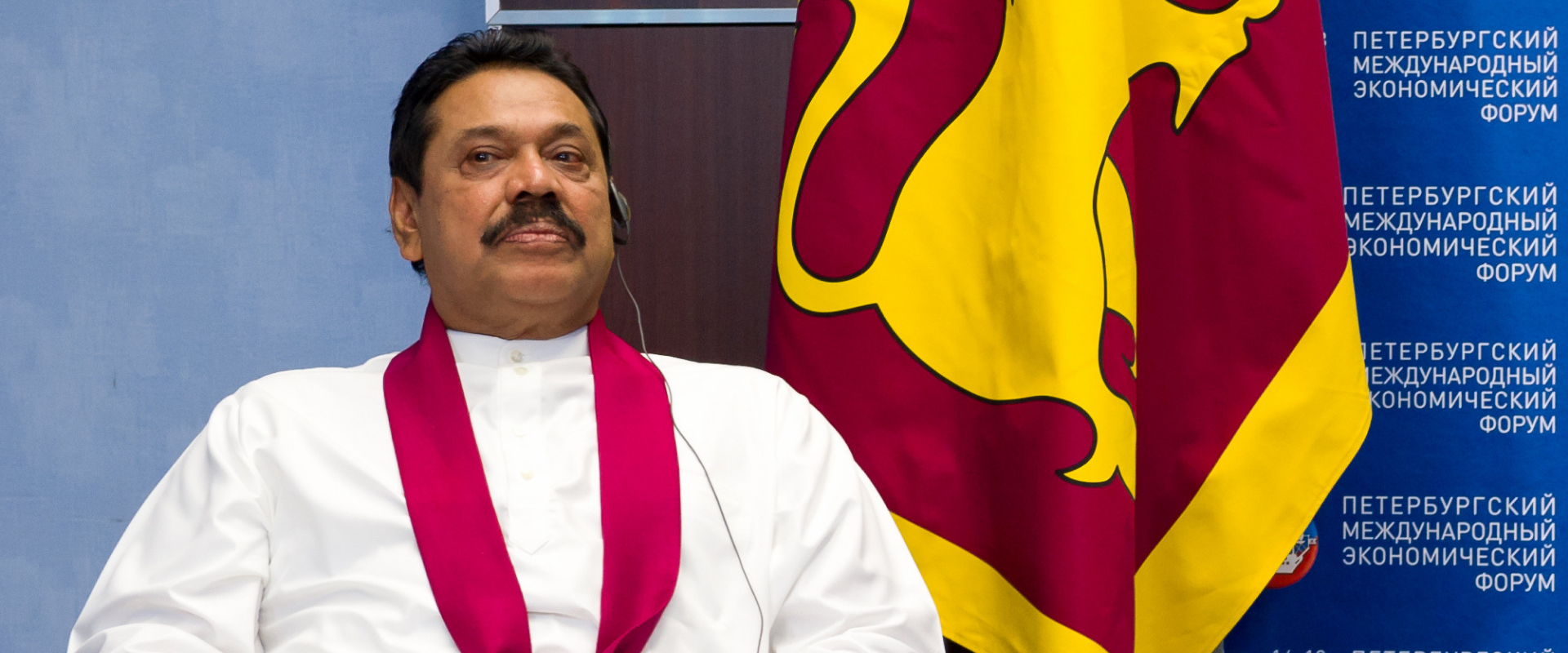This reading list examines Mahinda Rajapaksa’s tenure as Sri Lankan President from 2005 to 2015.
On 26 October 2018, Mahinda Rajapaksa was sworn in as Prime Minister, triggering a political crisis. Sri Lankan member of Parliament, Anura Kumara Dissanayaka, termed his appointment “unconstitutional.” Rajapaksa is currently unable to muster a majority in Parliament, and the removal of the previous Prime Minister, Ranil Wickremsinghe is mired in legal controversies.
From 2005 to 2015, Rajapaksa served as the Sri Lankan President, during which time he oversaw an end to the civil war between the state and the Liberation Tigers of Tamil Eelam (LTTE). His tenure, however, was marred by accusations of human rights abuses by the minority Sri Lankan Tamils. Rajapaksa is accused of attacking civilians and denying humanitarian aid, and refusing to allow the United Nations (UN) to conduct an independent probe. The Tamil National Alliance (TNA), a political party, has said that Rajapaksa brought only “pain and suffering” to the Tamil populace.
How strong is Sri Lanka’s democracy? If Rajapaksa’s appointment is legitimised, it is important that we revisit the sociopolitical landscape of Sri Lanka during his tenure as President. In this article, we examine his two terms as Sri Lankan President, and question whether Rajapaksa will respect democratic institutions.
1) Towards a Military–security State?
The military is “Rajapaksaised,” writes Tisaranee Gunasekara, with civilian institutions coming under the control of generals who conduct “leadership training” of the populace, which includes courses in physical and psychological regimentation. This militarisation drive, the author argues, is to strengthen “Rajapaksa Power”—currently wielded by Mahinda as President, and his siblings Gotabhaya and Basil who occupy the posts of Defence Secretary and Economic Development Minister respectively. With this style of militarisation, Gunasekara states that the Rajapaksas hope for an army which will defend their rule, well beyond the boundaries of democracy and constitutional legality.
“This orchestrated metamorphosis of Sri Lanka from a flawed democracy into a neo-patrimonial oligarchy is happening concurrently with the transformation of the Lankan military into a praetorian guard of the new familial power elite … This process began in 2011 when all new entrants to universities were ordered to undergo a compulsory three-week leadership training programmes in army camps. Varying excuses were conjured to make this outrageous anomaly seem necessary and innocuous, ranging from promoting English and computer literacy to teaching rural students proper table etiquette. But the real purpose of the programme is to transform universities—hitherto immune to Rajapaksa influence—from breeding-grounds for dissent into epicentres of patriotic-conformism.”
After the civil war, the military was omnipresent. From building infrastructure to controlling appointments in educational institutions, Gunasareka’s article speaks of a military–security state that the Rajapaksa regime hopes for Sri lanka to become, where the militarisation of civil spaces is seen as a a “pro people” initiative and any opposition to an increasing military budget is classified as support to Tamilian “terrorists.”
“The bloated military is being fed huge chunks of the national income, and used to crystallise Rajapaksa dominance of state and society … The military is a chain which binds together the Rajapaksas and their Sinhala constituents. And the Rajapaksas portray themselves as the defenders of the military, the sole barrier between it and an inimical international community led by a diabolical Tamil diaspora.”
2) Democracy, but Only in Name?
Kumar David’s 2013 article, written during Rajapaksa’s second tenure as President (2010–2015), laments the slow descent of Sri Lanka into an authoritarian regime, questioning if Rajapaksa will relinquish power at the end of his term. David argues that with Rajapaksa’s siblings installed in government posts and accusations of corruption over procured Chinese loans, his support among the educated elite has been eroded, and the masses may not vote for him again.
“It [Rajapaksa regime] cannot relinquish power for two reasons. Abductions and alleged kickbacks on a mind-boggling scale will lead to prosecutions when the leadership loses power. Then there is the overhanging threat of international war-crimes prosecution. Additionally there is a slim possibility of diaspora Liberation Tigers of Tamil Eelam (LTTE) elements seeking retributive vengeance when the security blanket is thinned. It is not only a question of unwillingness to give up power; it is also not being able to do so.”
3) Will the World Oppose Rajapaksa?
Writing after Rajapaksa was re-elected in 2010, Ahilan Kadirgamar cautions against hoping for a Sinhalese–Tamil union under a Rajapaksa government. He argues that even in the event of military dominance, Sri Lanka is of no geopolitical importance to other countries to warrant international intervention, even if a Rajapaksa–army nexus controls institutions. Kadirgamar rejects the prospect of renewed violence against minorities, arguing that the current state apparatus is repressive enough to dissuade another mobilisation.
“Many Sri Lankan actors—including sizeable sections of liberals and Tamil nationalists—have been counting on international pressure to bring about political change in Sri Lanka. However, some would argue that over the last three years, the Rajapaksa regime has strengthened its position nationally by mobilising against such international pressure; it has swept consecutive elections and nurtured Sinhala Buddhist nationalism by claiming to protect Sri Lanka’s sovereignty … Even in the face of formidable pressure, the regime is unlikely to break from its Sinhala Buddhist nationalist leanings and base, for that would involve political risks of drastically changing its ideological base constructed over the last six years with war and militarisation.”
